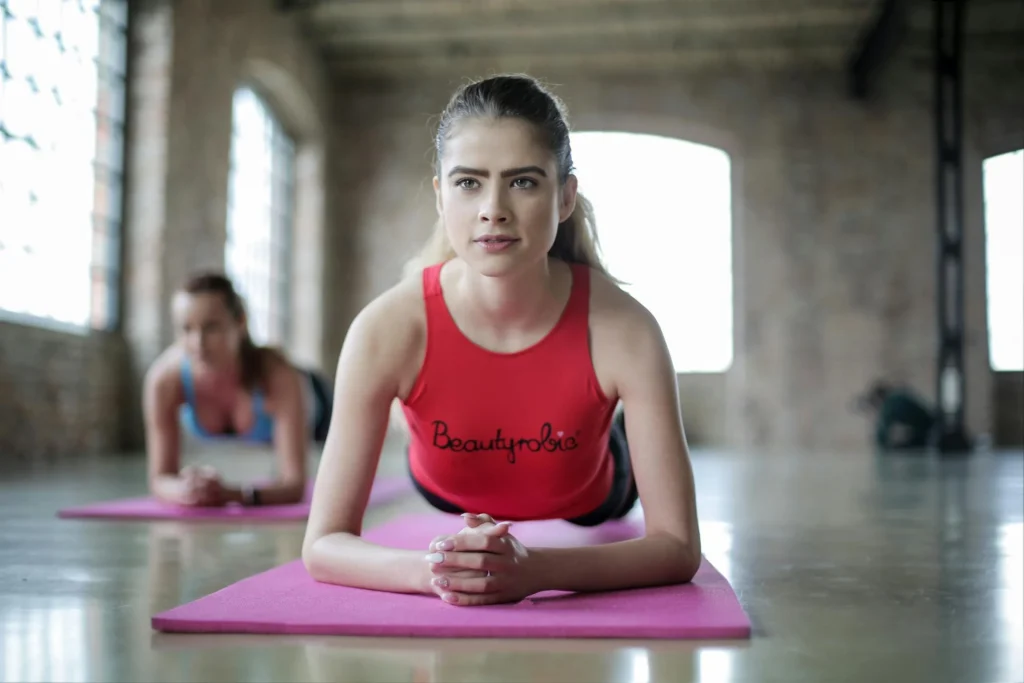Physical fitness is more than just having a “six-pack” or being able to run a marathon. It’s a holistic state of well-being that encompasses physical health, mental resilience, and overall quality of life. It’s about having the energy to tackle daily tasks, the strength to handle physical challenges, and the mental clarity to thrive. This blog post dives deep into the multifaceted world of physical fitness, exploring various aspects and offering practical strategies for achieving and maintaining a healthy and active lifestyle.

Defining Physical Fitness: Beyond the Surface
Physical fitness is a complex concept with several components. It’s not just about aesthetics; it’s about your body’s ability to function optimally. Key elements of physical fitness include:
- Cardiovascular Endurance: The ability of your heart and lungs to supply oxygen to your muscles during sustained physical activity. This is crucial for activities like running, swimming, and cycling.
- Muscular Strength: The maximum force your muscles can generate. Strength training helps you perform everyday tasks with ease and supports bone health.
- Muscular Endurance: The ability of your muscles to repeatedly exert force over a period of time. This is important for activities that require sustained muscle use.
- Flexibility: The range of motion around your joints. Flexibility helps prevent injuries and improves posture.
- Body Composition: The proportion of fat, muscle, bone, and other tissues in your body. A healthy body composition is associated with lower risk of chronic diseases.
The Benefits of Physical Fitness: A Holistic View
The advantages of being physically fit extend far beyond physical appearance. They impact virtually every aspect of your well-being:
- Improved Cardiovascular Health: Regular exercise strengthens your heart, lowers blood pressure, and reduces the risk of heart disease, stroke, and other cardiovascular problems.
- Weight Management: Physical activity burns calories and helps maintain a healthy weight. It also helps regulate metabolism and body composition.
- Stronger Bones and Muscles: Weight-bearing exercises strengthen bones and help prevent osteoporosis. Strength training builds muscle mass and improves muscle function.
- Increased Energy Levels: Regular exercise can actually increase your energy levels by improving cardiovascular function and reducing fatigue.
- Reduced Risk of Chronic Diseases: Physical fitness significantly lowers the risk of developing chronic diseases such as type 2 diabetes, certain types of cancer, and arthritis.
- Improved Mental Health: Exercise releases endorphins, which have mood-boosting effects. Physical activity can reduce stress, anxiety, and symptoms of depression.
- Better Sleep: Regular exercise can improve sleep quality, making it easier to fall asleep and stay asleep.
- Enhanced Cognitive Function: Physical activity has been linked to improved cognitive function, including memory, attention, and decision-making.
- Increased Longevity: Studies have shown that physically active individuals tend to live longer and have a lower risk of premature death.
- Boosted Self-Esteem and Confidence: Achieving fitness goals can boost self-esteem and confidence.
- Improved Balance and Coordination: Exercise can improve balance and coordination, reducing the risk of falls, especially in older adults.
Creating a Personalized Fitness Plan: A Step-by-Step Approach
There’s no one-size-fits-all approach to physical fitness. The best plan is the one you can stick to. Here’s how to create a personalized fitness plan:
- Assess Your Current Fitness Level: Before starting any new exercise program, it’s essential to assess your current fitness level. This can involve simple tests like measuring your heart rate, assessing your flexibility, or trying a short walk or run.
- Set Realistic Goals: Define your fitness goals. Are you aiming to lose weight, build muscle, improve your cardiovascular health, or simply be more active? Make sure your goals are specific, measurable, achievable, relevant, and time-bound (SMART).
- Choose Activities You Enjoy: The key to long-term adherence is choosing activities you genuinely enjoy. This could be anything from running and swimming to dancing, hiking, or playing team sports.
- Incorporate a Variety of Exercises: A well-rounded fitness plan should include a mix of cardiovascular exercise, strength training, and flexibility exercises.
- Start Slowly and Gradually Increase Intensity: Don’t try to do too much too soon. Start with a low intensity and gradually increase the duration and intensity of your workouts as your fitness level improves.
- Create a Schedule and Stick to It: Schedule your workouts in advance and treat them like any other important appointment. Consistency is key to seeing results.
- Find a Workout Buddy: Having a workout buddy can provide motivation and accountability.
- Listen to Your Body and Rest When Needed: It’s important to listen to your body and take rest days when needed. Overtraining can lead to injuries and burnout.
- Stay Hydrated: Drink plenty of water throughout the day, especially before, during, and after workouts.
- Fuel Your Body with a Healthy Diet: Exercise is only one part of the equation. A healthy diet is essential for providing your body with the nutrients it needs to fuel your workouts and recover properly.
Types of Exercise: Finding Your Fit
There are various types of exercise, each offering unique benefits:
- Cardiovascular Exercise (Aerobic Exercise): Activities like running, swimming, cycling, and dancing elevate your heart rate and improve cardiovascular health.
- Strength Training (Resistance Training): Exercises using weights, resistance bands, or your own body weight build muscle strength and endurance.
- Flexibility Exercises: Stretching and yoga improve flexibility and range of motion.
- High-Intensity Interval Training (HIIT): Short bursts of intense exercise followed by brief recovery periods improve cardiovascular fitness and burn calories efficiently.
- Functional Training: Exercises that mimic everyday movements, such as squats, lunges, and push-ups, improve overall functional fitness.
Nutrition and Physical Fitness: A Synergistic Relationship
Nutrition plays a crucial role in supporting physical fitness. A balanced diet provides the energy and nutrients your body needs to perform at its best and recover effectively. Key nutritional considerations include:
- Adequate Calorie Intake: Consume enough calories to fuel your workouts and support your activity level.
- Balanced Macronutrients: Ensure you’re getting enough protein, carbohydrates, and healthy fats.
- Micronutrients: Consume a variety of fruits, vegetables, and whole grains to ensure you’re getting the vitamins and minerals your body needs.
- Hydration: Drink plenty of water throughout the day.
- Timing of Meals: Consider the timing of your meals and snacks in relation to your workouts.
Overcoming Challenges and Staying Motivated: The Long Game
Staying physically fit is a journey, not a destination. There will be challenges along the way. Here are some tips for overcoming obstacles and staying motivated:
- Find Your “Why”: Connect with your deeper reasons for wanting to be physically fit. This will help you stay motivated when things get tough.
- Track Your Progress: Monitoring your progress can help you stay motivated and see how far you’ve come.
- Celebrate Your Successes: Acknowledge and celebrate your achievements, no matter how small.
- Don’t Be Afraid to Ask for Help: If you’re struggling, don’t hesitate to ask for help from a personal trainer, nutritionist, or other health professional.
- Remember That Consistency is Key: Even on days when you don’t feel like it, try to do something active. Consistency is more important than perfection.
The Importance of Rest and Recovery: The Unsung Heroes
Rest and recovery are just as important as exercise and nutrition. They allow your body to repair and rebuild muscle tissue, preventing injuries and burnout. Key aspects of rest and recovery include:
- Adequate Sleep: Aim for 7-9 hours of quality sleep per night.
- Rest Days: Incorporate rest days into your workout schedule to allow your body to recover.
- Active Recovery: Light activities like walking or stretching can promote blood flow and help muscles recover.
Physical Fitness Throughout Life Stages: Adapting to Change
Physical fitness needs change throughout different life stages. It’s important to adapt your fitness plan as you age and your body changes.
- Childhood and Adolescence: Focus on developing fundamental movement skills and building a foundation for lifelong activity.
- Adulthood: Maintain a balanced fitness routine that includes cardiovascular exercise, strength training, and flexibility exercises.
- Older Adulthood: Focus on maintaining functional fitness, balance, and coordination to prevent falls and maintain independence.
Conclusion: A Lifelong Journey Towards Well-being
Physical fitness is a lifelong journey that requires commitment, consistency, and a holistic approach. It’s not just about physical appearance; it’s about overall well-being. By understanding the components of physical fitness, creating a personalized plan, incorporating a variety of exercises, prioritizing nutrition and rest, and staying motivated, you can achieve and maintain a healthy and active lifestyle. The benefits of physical fitness are immense, impacting your physical health, mental well-being, and overall quality of life. Embrace the journey, celebrate your progress, and enjoy the rewards of a fit and healthy life.





Leave a Reply
You must be logged in to post a comment.